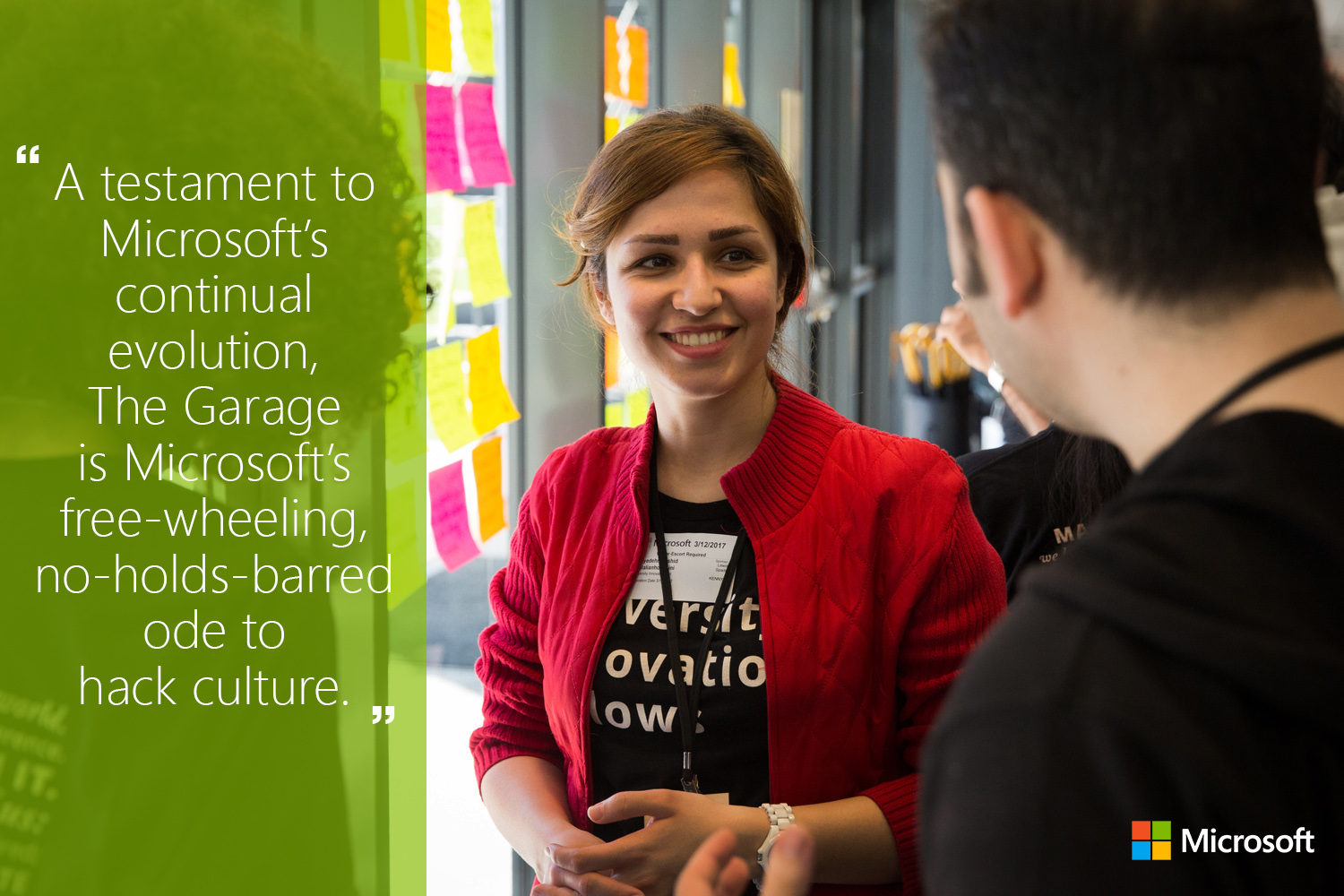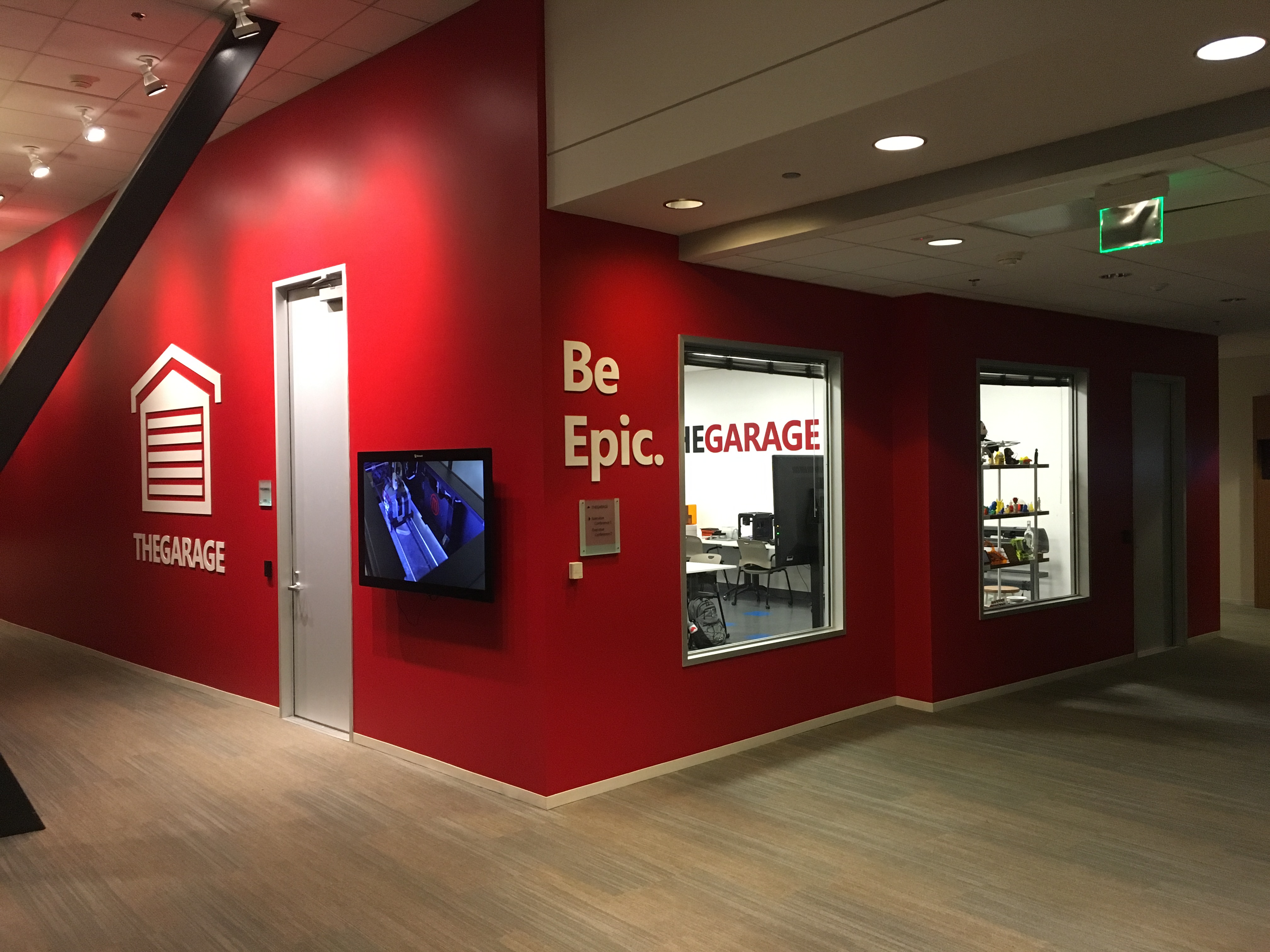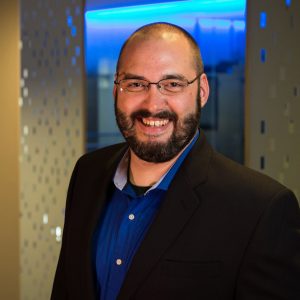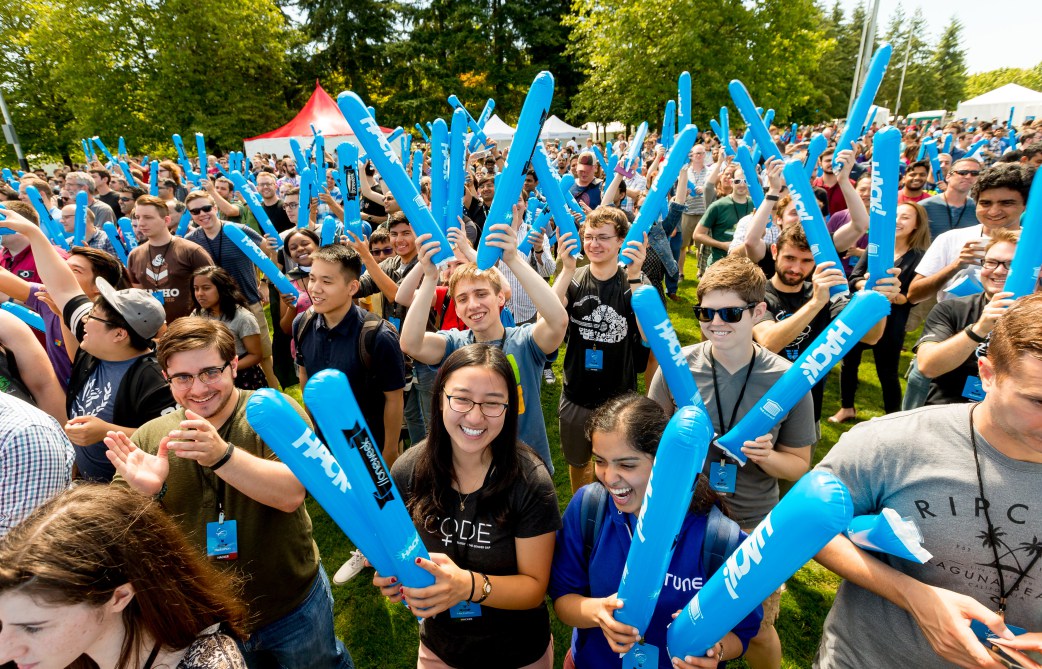 How can we encourage employees to problem solve in new and innovative ways, ultimately empowering people to achieve more? On our campus, there’s a home for the relentlessly curious and lifelong learners who like to be hands-on.
How can we encourage employees to problem solve in new and innovative ways, ultimately empowering people to achieve more? On our campus, there’s a home for the relentlessly curious and lifelong learners who like to be hands-on.
Enter The Garage, Microsoft’s makerspace and outlet for experimental projects — a testament to Microsoft’s continual evolution. The Garage is Microsoft’s free-wheeling, no-holds-barred ode to hack culture. Launched in 2013, it began from what was an offshoot of Office Labs. At Microsoft’s corporate headquarters in Redmond, Wash., a passionate community of a few hundred people opened the first Garage location. Now, The Garage is a global program with seven Garage spaces worldwide and many thousand active employees. It inspires tens of thousands more Microsoft employees and interns — and the technology industry as a whole — to reconsider how innovation is possible through hack culture and engineering experimentation.
 In 2015, we had the opportunity to open a Garage makerspace of our own on our campus in Silicon Valley, a community ripe with innovative thinking and diverse ideas. “The primary role of The Garage is to allow our employees an innovation space,” said Kenny Spade, Microsoft Garage manager. “We have a makerspace, but we also regularly host activities and events to help spark creativity and encourage collaboration amongst our employees.”
In 2015, we had the opportunity to open a Garage makerspace of our own on our campus in Silicon Valley, a community ripe with innovative thinking and diverse ideas. “The primary role of The Garage is to allow our employees an innovation space,” said Kenny Spade, Microsoft Garage manager. “We have a makerspace, but we also regularly host activities and events to help spark creativity and encourage collaboration amongst our employees.”
Garage guests have access to the latest technology, including a 60-watt laser from Universal Laser, soldering stations, an 82-inch Perceptive Pixel display connected to a scanning station that uses Kinect to create 3D replicas of Garage guests and more 3D printers including the MakerBot Replicator Mini.
With these tools and more, the Garage helps to empower people as makers — to challenge convention, build on their passions and move ideas forward. During a drone racing event the Garage hosted in April, employees got an opportunity to try out drone technology. The Garage also serves as a hub through which we build connections with the local tech and higher education communities in the Bay Area.

“Getting a look at the makerspace, getting their hands on technologies like HoloLens allows people outside Microsoft to understand that we are more than some of the software packages they might be used to — they get to experience our innovative technologies being developed in the Silicon Valley,” Spade said.
Recently, we were honored to host the University Innovation Fellows (UIF) of Stanford University. The UIF program empowers students around the world become leaders of change.
“These are the brightest students in this field selected by their schools,” Spade said. “They’re engineering people, or people who are pursuing technology fields, who are then able to come to the Silicon Valley and experience what these companies have to offer and how they work.”
The program, run by Stanford University’s Hasso Plattner Institute of Design (d.school), has trained 1,000 fellows from 185 schools internationally. On Sunday, March 12, we were honored to host about 300 fellows. They spoke to Microsoft employees about “Leading from the Bottom” and the future of innovation at Microsoft. Later that day, they broke out into an UnConference, where topics most interesting to them were decided on the spot. On Monday, about 50 students returned to Microsoft to tour The Garage, speak more intimately with employees and get an in-depth, hands-on training on technologies like HoloLens. They used the Unity game development platform and were able to write and deploy code to the HoloLens, showing them just how easy it could be to get involved in mixed reality.
“All the students had so much excitement and passion to be a part of this program, and it’s great because we’re able to have them on campus and share some of that excitement with our employees at Microsoft,” Spade said.
“We reflect their excitement and value being able to share our passion with them and like answering why we love being in this field and why we think they’ll love being in this field when they graduate.”
![]() This July, The Garage will again serve as “Hack Central” for the largest private hackathon in the world. Microsoft’s fourth annual company-wide One Week Hackathon kicks off on July 24. At our last One Week Hackathon, more than 16,000 hackers participated globally. About 60,000 employees worldwide got involved in more than 3,200 registered Hackathon projects, ranging from bots to HoloLens, as well as focusing on cognitive services, accessibility, inclusive design and more.
This July, The Garage will again serve as “Hack Central” for the largest private hackathon in the world. Microsoft’s fourth annual company-wide One Week Hackathon kicks off on July 24. At our last One Week Hackathon, more than 16,000 hackers participated globally. About 60,000 employees worldwide got involved in more than 3,200 registered Hackathon projects, ranging from bots to HoloLens, as well as focusing on cognitive services, accessibility, inclusive design and more.
The goal of the hackathon is for employees to drive whatever they are interested in, whether that’s flexing a new muscle completely unrelated to their previous work with an inspired team or building a new feature for an ongoing project.
“The Hackathon is a major effort within the company to give our employees an opportunity to try something new,” Spade said.
 This year, we’re thrilled to invite the UIF students to participate. The fellows will put together proposals for how to hack and increase diversity in tech, and students with the best ideas will fly to Silicon Valley for One Week.
This year, we’re thrilled to invite the UIF students to participate. The fellows will put together proposals for how to hack and increase diversity in tech, and students with the best ideas will fly to Silicon Valley for One Week.
“This gives us the opportunity to be able to learn from people outside of Microsoft, and the reverse, too,” Spade said.




